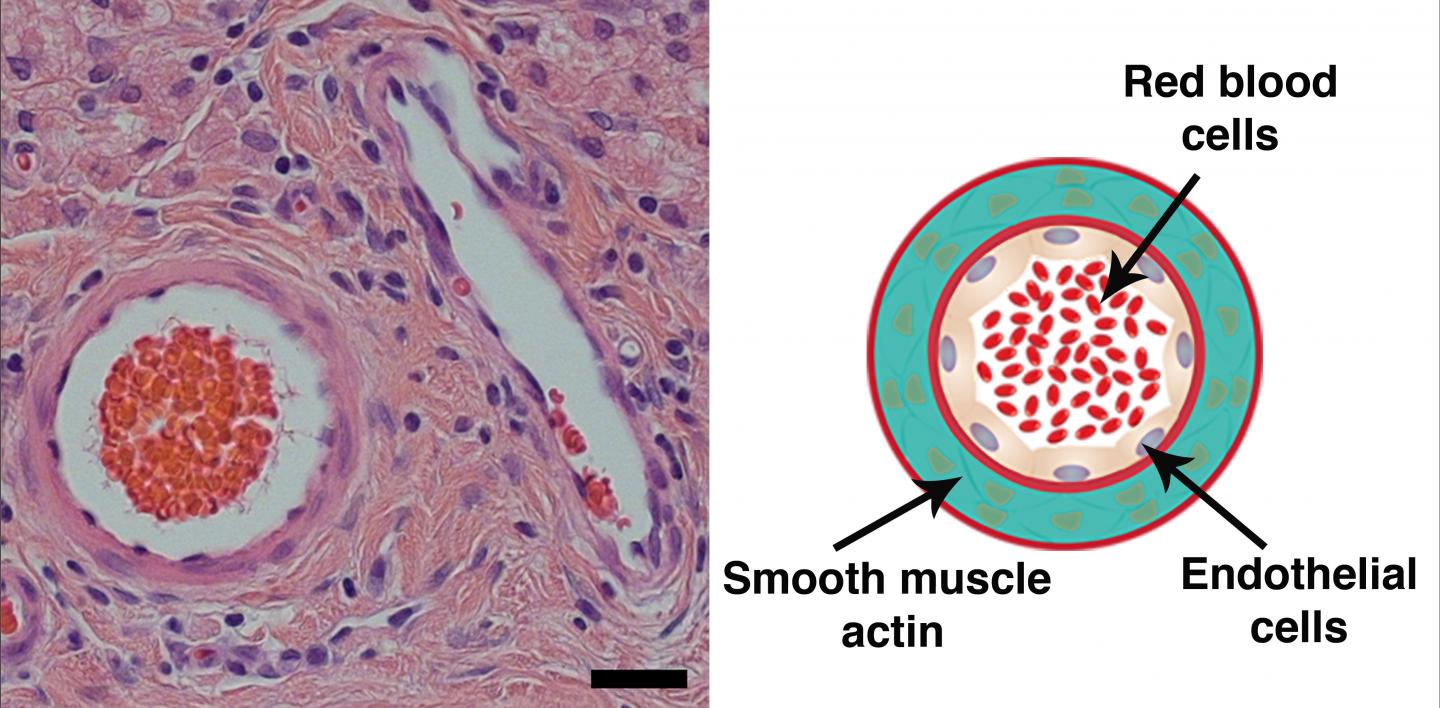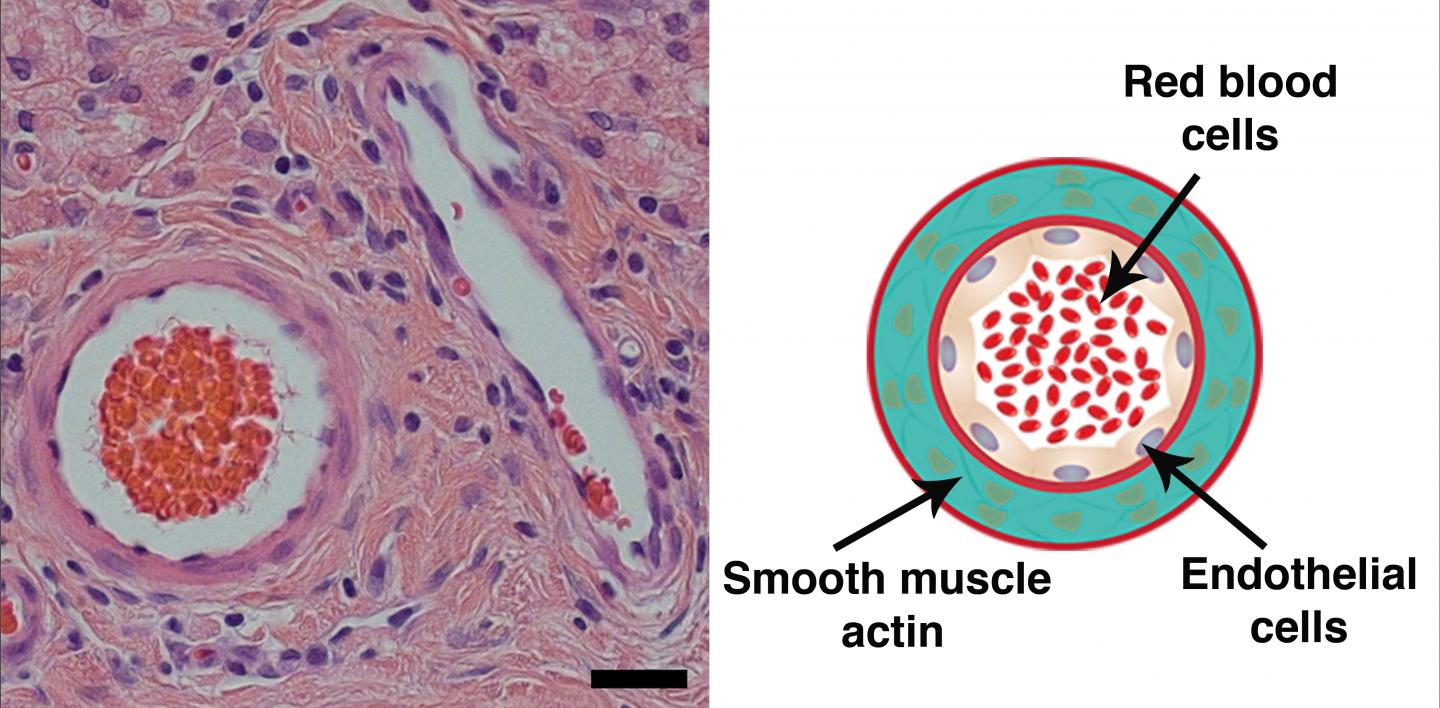
Credit: Hartgerink Research Group/Rice University
Sometimes when you're invested in a project you fail to notice things that turn out to be significant.
Researchers in the Rice lab of chemist and bioengineer Jeffrey Hartgerink had just such an experience with the hydrogels they developed as a synthetic scaffold to deliver drugs and encourage the growth of cells and blood vessels for new tissue.
To do so, they often tested the gels by infusing them before injection with bioactive small molecules, cells or proteins. What they didn't realize until recently was that the hydrogel itself has significant therapeutic qualities.
The lab reported in the Elsevier journal Biomaterials that a particular hydrogel, a self-assembling multidomain peptide (MDP) with the amino acid sequence K2(SL)6K2, is indeed bioactive.
Once Hartgerink and his team started to investigate the phenomenon, they found that even without additives their MDP is rapidly infiltrated by host cells, provokes a temporary inflammatory response, does not develop a fibrous capsule, supports the infiltration of a mature vascular network and recruits nerve fibers.
"We were surprised to find this strong effect in what we had previously considered to be a control peptide," Hartgerink said. "As it turned out, the inherent structure and chemistry of this peptide, despite being quite simple, results in a strong biological response."
The hydrogel, which can be delivered through a syringe, is designed to degrade over six weeks and leave behind healthy tissue. Because the peptides are designed from the bottom up to mimic their natural counterparts, the lab found they create an optimal environment for the body's own systems to encourage healing.
The researchers reported the natural inflammatory response when a foreign substance like a hydrogel is introduced into a system and draws cells that secrete proteins involved in cellular infiltration, scaffold degradation, vascularization and innervation. Tests on injected hydrogel showed a "statistically significant" increase in the presence of cytokines known to provoke an inflammatory response, as well as an increase in anti-inflammatory agents, both of which remained steady after day three and through two weeks.
That, Hartgerink said, indicates the hydrogel appears to harness the body's innate capacity to heal as it transitions from a pro-inflammatory to a pro-healing environment.
"As we eventually discovered, this exceptional peptide allows the body to carry out healing on its own, but with a significant boost," he said. "We believe the key step is the initial, and very rapid, cell infiltration. Once these cells are on location, they produce everything they need for an impressive regenerative response, including angiogenesis and neurogenesis."
Hartgerink said the lab is pursuing application of the peptide for wound-healing in diabetic ulcers.
###
Rice graduate student Amanda Moore is lead author of the study. Co-authors are Rice graduate students Tania Lopez Silva, Nicole Carrejo, Carlos Origel Marmolejo and I-Che Li. Hartgerink is a professor of chemistry and of bioengineering.
The National Institutes of Health, the Welch Foundation, the National Science Foundation, the Mexican National Council for Science and Technology and a Stauffer-Rothrock Fellowship supported the research.
Read the abstract at https://www.sciencedirect.com/science/article/pii/S0142961218300462
This news release can be found online at http://news.rice.edu/2018/03/13/hydrogel-helps-heal-without-additives/
Follow Rice News and Media Relations via Twitter @RiceUNews
Related materials:
Slow-release hydrogel aids immunotherapy for cancer: http://news.rice.edu/2018/03/07/slow-release-hydrogel-aids-immunotherapy-for-cancer-2/
Hartgerink Research Group: http://www.ruf.rice.edu/~jdh/
Lei Lab: http://media.dent.umich.edu/labs/lei/
Rice Department of Chemistry: http://chemistry.rice.edu
Rice Department of Bioengineering: http://bioe.rice.edu
Located on a 300-acre forested campus in Houston, Rice University is consistently ranked among the nation's top 20 universities by U.S. News & World Report. Rice has highly respected schools of Architecture, Business, Continuing Studies, Engineering, Humanities, Music, Natural Sciences and Social Sciences and is home to the Baker Institute for Public Policy. With 3,970 undergraduates and 2,934 graduate students, Rice's undergraduate student-to-faculty ratio is just under 6-to-1. Its residential college system builds close-knit communities and lifelong friendships, just one reason why Rice is ranked No. 1 for quality of life and for lots of race/class interaction and No. 2 for happiest students by the Princeton Review. Rice is also rated as a best value among private universities by Kiplinger's Personal Finance. To read "What they're saying about Rice," go to http://tinyurl.com/RiceUniversityoverview.
Media Contact
David Ruth
[email protected]
713-348-6327
@RiceUNews
http://news.rice.edu
Related Journal Article
http://dx.doi.org/10.1016/j.biomaterials.2018.01.033





